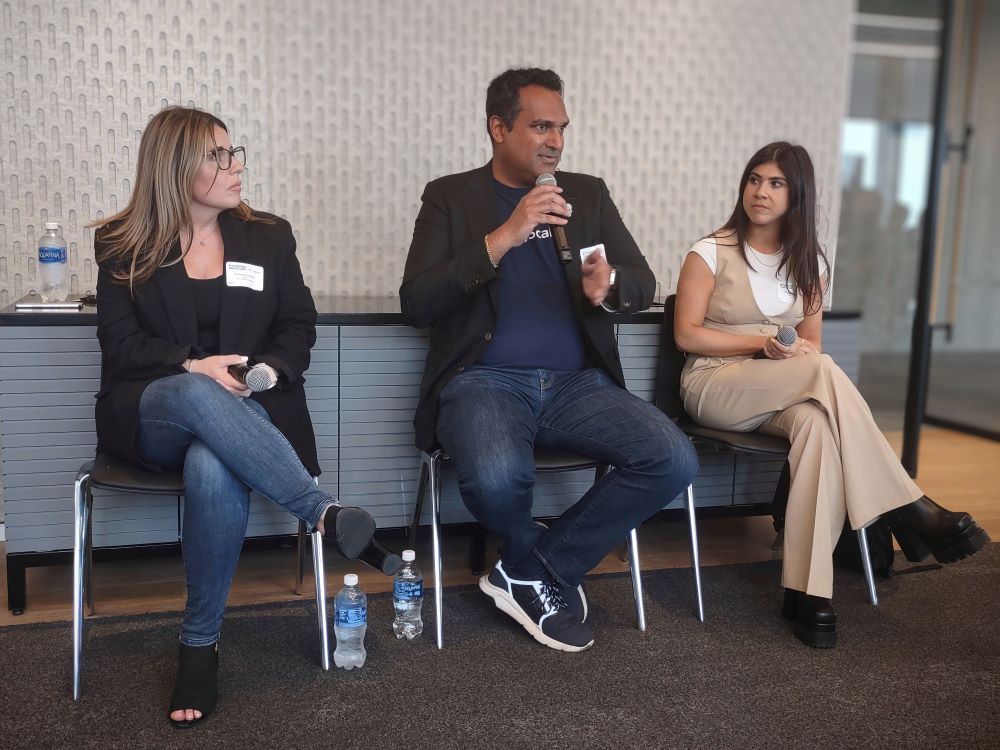Officially, the COVID-19 emergency is over. It was an era that changed things: Entrepreneurship surged, Wi-Fi access expanded and months of CDC-recommended remote work turned into a new workplace model that most companies wouldn’t have dreamed of implementing in the Before Times.
Today, about one-third of US workers who can work remotely work from home five days a week or more (full remote), according to a Zippia report. More than 80% say they prefer to work for a company that offers remote work at least some of the time, citing quality-of-life reasons like less commuting, cost savings and more time with family.
In 2021, when offices were easing back into in-person work days, a rotating hybrid model was often simply a COVID safety measure to ensure social distancing. Companies that fully adopted a hybrid workplace as their model were innovators: Today, about three-quarters of US companies have or are planning to implement a hybrid model.
Why are so many companies going hybrid? It’s often about retention.
Melissa Richardson, the VP of team success at Kleer, a software development company based in Wayne, Pennsylvania, found that requiring just two days in the office was a disadvantage for hiring as COVID restrictions began to lift.
“We were competing against companies from all over the country,” she said while speaking on the “Remote Work, Employee Engagement and Avoiding Burnout Hell” panel during the Builders Conference at Philly Tech Week 2023 presented by Comcast. “Recruiters were reaching out to everyone because you could work from anywhere.”
Kleer, like many employers, took the position that employees should be required to come into the office for at least part of the work week.
“I think just seeing each other, having that personal relationship with one another, builds trust,” she said. “When you have trust, you’re a stronger team.”
Kleer had moved into a new office just before the March 2020 lockdown, and opened the office to employees as soon as possible, but not all at once. Instead, it eased employees into coming back with voluntary office days before eventually requiring employees to come in twice a week — a move that caused some employees to rethink staying with the company.

“You can’t force the same working model on everyone,” said Anil Karmel, cofounder and CEO of RegScale, a compliance management platform based in Tysons Corner, Virginia. “You have to meet folks where they are. … Our developers work one way, our sales and marketing team work a different way.”
RegScale is so committed to hybrid work that its office can’t physically accommodate all of its employees. Employees who want to work in the office most days and want a set space can have it, but most use hotel desks, or desks that are reserved for the day instead of using a permanent office or cubicle.
For Kimberly Klayman, a partner at the law firm Ballard Spahr in Philadelphia, the hybrid model made her rethink the new, bigger office she got when returning to in-person after being promoted.
“I no longer worked at a desk,” she said. “I’d been so used to working at a coffee table at home or my kitchen table that I didn’t feel as good behind one of those clunky old school desks.”
Klayman wound up enlisting a friend to help her redesign her traditional lawyer’s office into a communal group space, with a couch, coffee table and coffee machine.
“It turned into this space for all of our colleagues to get together and brainstorm things,” she said.
That thinking — that you should maximize collaborative time when you’re in the office — goes along with a popular hybrid workplace strategy: in-person for collaboration, remote for deep work.
“If you need to code, the best place to go usually is in your house,” Karmel said. “You’ve got your setup, you’re comfortable, you’ve got whatever you need.”
In the end, Kleer stepped back from requiring mandatory in-person days. That wound up having the unexpected effect of drawing majority-remote employees into the office more often by simply scheduling training, meetings and events on “office” days with no pressure. Not only is the team spending more time together, they’re less likely to suffer burnout when their schedules aren’t dictated.
“It really started with us listening to our team and what they wanted, rather than trying to mandate how things have to go,” Richardson said. “We are allowing people the flexibility to make the decision for themselves. We’ve evolved, and we are still evolving and learning as the situation continues to change.”







